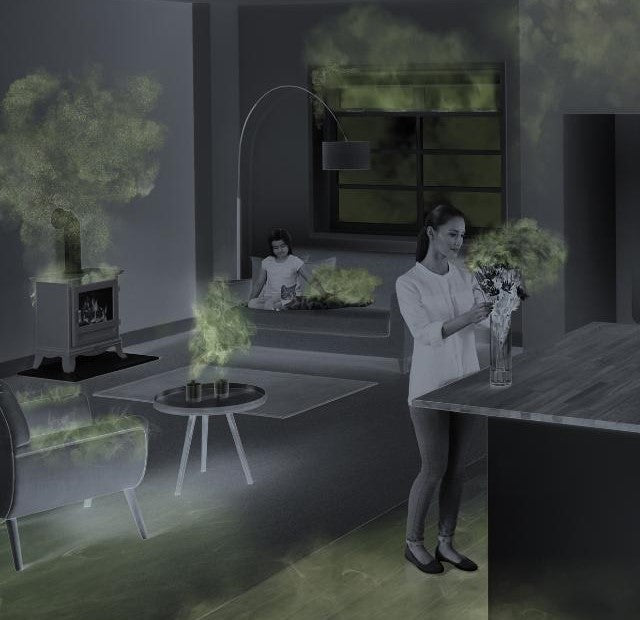Household air pollution is the third leading cause of disability-adjusted life years globally. There are at least sixty sources of household air pollution, and these vary from country to country. Indoor tobacco smoking, construction material used in building houses, fuel used for cooking, heating and lighting, use of incense and various forms of mosquito repellents, use of pesticides and chemicals used for cleaning at home, and use of artificial fragrances are some of the various sources that contribute to household air pollution.
Identifying household air pollutants and their health implications helps us prepare for various health-related issues. However, the real challenge is adopting changes to reduce the health effects of household air pollution and designing innovative interventions to minimize the risk of further exposure.

One of the major sources of household air pollution, especially in developing countries, is fuel used for cooking as well as heating practices. Homes from developed countries and many houses in the developing world use electricity, natural gas, or clean LPG for cooking, whereas houses in rural communities and some houses of the developing world use biomass fuel for cooking. Poorly ventilated homes tend to accumulate kitchen odors as well as concentrate the household air pollutants. This warrants the use of perfumes and scents to improve the level of hygiene in the house. Improved hygiene involves the use of cleaning agents, perfumes and deodorants, scented candles, and so on to make the house cozier and more comfortable.

Smoking tobacco in any form within the confines of a house is a major source of household air pollution. Cigarette smoke contains 7,357 different chemical compounds such as benzene, CO, PAHs, heterocyclic amines, cyanide, formaldehyde, terpenoids, phenols, nicotine, and heavy metals. Burning tobacco also emits considerable amounts of PM 2.5 (burning one cigarette emits 7 to 23 mg of PM 2.5) 10. Tobacco smoke could be first-hand, second-hand, or third-hand
smoke. A person who smokes within the confines of his house is exposed to the smoke himself (first-hand smoke). Other occupants of the house inhaling these fumes but not actually smoking are exposed to second-hand smoke. The particles emitted during smoking settle on the furnishings, hair, clothes, and the floor. These particles remain suspended in the household air for quite a while even after the primary smoker has exited the premises. This constitutes third-hand smoke.

You should always be mindful of the levels of dust, smoke, and other airborne particles in your home, and always clean regularly to ensure optimal air quality for your respiratory health. The HYLA EST is the perfect partner to facilitate this! When you clean with the HYLA, the air with dust and other particles enters the HYLA water pan through the inlet tube, creating an upward stream of water – the HYLA Geyser. This effect ensures optimal conditions for filtration by creating a mixture of droplets and dust particles, while the NEW HYLA DEFENDER blades cut larger water droplets into microdroplets and disperse them at high speed. The HYLA EST is extremely capable of reducing and eliminating pollutants within the air in your home, increasing your indoor air quality while reducing need for dirty filters, harsh chemicals, and more.

The cleaning power of water is truly underestimated, but the HYLA takes full advantage of its capabilities to ensure your home feels as fresh inside as it can be outside. No filters necessary, as the water acts as its OWN filter, and the unique DEFENDER Separator Technology safely and naturally eliminates the dust and other harmful particles. Don't settle for less than what you and your home deserve!

